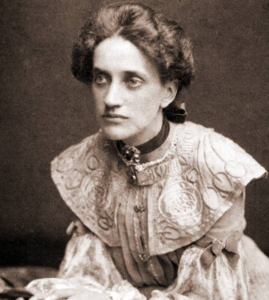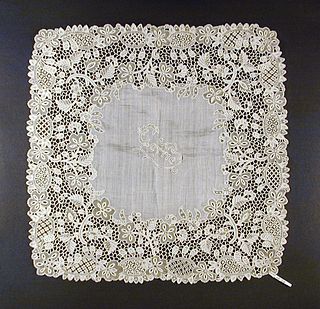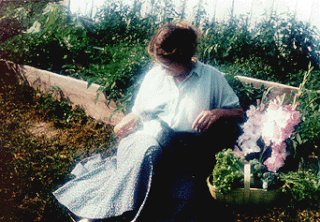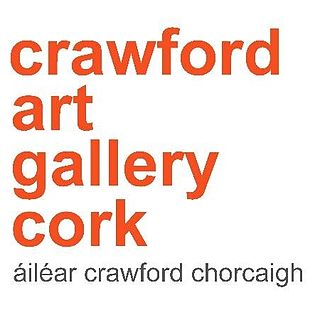
A handicraft, sometimes more precisely expressed as artisanal handicraft or handmade, is any of a wide variety of types of work where useful and decorative objects are made completely by one's hand or by using only simple, non-automated related tools like scissors, carving implements, or hooks. It is a traditional main sector of craft making and applies to a wide range of creative and design activities that are related to making things with one's hands and skill, including work with textiles, moldable and rigid materials, paper, plant fibers, clay, etc. One of the oldest handicraft is Dhokra; this is a sort of metal casting that has been used in India for over 4,000 years and is still used. In Iranian Baluchistan, women still make red ware hand-made pottery with dotted ornaments, much similar to the 5,000-year-old pottery tradition of Kalpurgan, an archaeological site near the village. Usually, the term is applied to traditional techniques of creating items that are both practical and aesthetic. Handicraft industries are those that produce things with hands to meet the needs of the people in their locality without using machines.

Lace is a delicate fabric made of yarn or thread in an open weblike pattern, made by machine or by hand. Generally, lace is divided into two main categories, needlelace and bobbin lace, although there are other types of lace, such as knitted or crocheted lace. Other laces such as these are considered as a category of their specific craft. Knitted lace, therefore, is an example of knitting. This article considers both needle lace and bobbin lace.

Ann Macbeth was a British embroiderer, designer, teacher and author, a member of the Glasgow Movement and an associate of Charles Rennie Mackintosh. She was also an active suffragette and designed banners for suffragists and suffragettes movements.
Needlepoint is a type of canvas work, a form of embroidery in which yarn is stitched through a stiff open weave canvas. Traditionally needlepoint designs completely cover the canvas. Although needlepoint may be worked in a variety of stitches, many needlepoint designs use only a simple tent stitch and rely upon color changes in the yarn to construct the pattern. Needlepoint is the oldest form of canvas work.

Cork Institute of Technology was an institute of technology, located in Cork, Ireland. Upon its dissolution, the institute had 17,000 students studying in art, business, engineering, music, drama and science disciplines. The institute had been named as Institute of Technology of the Year in The Sunday Times University Guide for Ireland on numerous occasions. On 1 January 2021, the institute merged with the Institute of Technology, Tralee to become the Munster Technological University, Ireland's second technological university.

Kenmare is a small town in the south of County Kerry, Ireland. The name Kenmare is the anglicised form of Ceann Mara, meaning "head of the sea", referring to the head of Kenmare Bay.

Mountmellick or Mountmellic is a town in the north of County Laois, Ireland. It lies on the N80 national secondary road and the R422 and R423 regional roads. The town is part of Mountmellick Roman Catholic parish.

Youghal lace is a needle lace inspired by Italian needle lace and developed in Youghal, County Cork, Ireland.

Limerick lace is a specific class of lace originating in Limerick, Ireland, which was later produced throughout the country. It evolved from the invention of a machine which made net in 1808. Until John Heathcoat invented a net-making machine in Devon in 1815, handmade net was a very expensive fabric. This meant cheap net became available to Irish lacemakers, particularly after 1823 when Heathcoat's patent expired.

Marilyn Leavitt-Imblum was an American cross-stitch embroidery designer known especially for her Victorian angel designs. Her designs were published under the business name Told in a Garden, with product divisions of Told in a Garden, Lavender and Lace, and Butternut Road.

The Honan Chapel is a small Catholic church built in the Hiberno-Romanesque revival style on the grounds of University College Cork, Ireland. Designed in 1914, the building was completed in 1916 and furnished by 1917. Its architecture and fittings are representative of the Celtic Revival movement and evoke the Insular art style prevalent in Ireland and Britain between the 7th and 12th centuries.

Cub Scouts or Macaoimh is the name given to youth members Scouting Ireland and previously Scouting Ireland (CSI), of the Cub Scout age group. The National Team Lead and Programme Commissioner for Cub Scouts is Evan O'Connell of the 49th Cork, Ballincollig Scout group. The terms Macaoimh and Cub are often co-existent though Macaoimh represents a different tradition. Both boys and girls participate in the Cub Scout programme though some Scout Groups are boys only. Its membership is the largest of the four Scouting Ireland Sections. The Cub Scout programme is part of the worldwide Scouting movement and aims to develop the youth member using the SPICE program - Social, Physical, Intellectual, Character, Emotional and Spiritual.

The Crawford Art Gallery is a public art gallery and museum in the city of Cork, Ireland. Known informally as the Crawford, it was designated a 'National Cultural Institution' in 2006. It is "dedicated to the visual arts, both historic and contemporary", and welcomed 265,438 visitors in 2019. The gallery is named after William Horatio Crawford.

Margaret Anna Cusack, also known as Sister Mary Francis Cusack and Mother Margaret, was first an Irish Anglican nun, then a Roman Catholic nun, then a religious sister and the founder of the Sisters of St. Joseph of Peace, and then an Anglican. By 1870 more than 200,000 copies of her works which ranged from biographies of saints to pamphlets on social issues had circulated throughout the world, the proceeds from which went towards victims of the Famine of 1879 and helping to feed the poor.

James Brenan was an Irish artist.

Irish lace has always been an important part of the Irish needlework tradition. Both needlepoint and bobbin laces were made in Ireland before the middle of the eighteenth century, but never, apparently, on a commercial scale. It was promoted by Irish aristocrats such as Lady Arabella Denny, the famous philanthropist, who used social and political connections to support the new industry and promote the sale of Irish lace abroad. Lady Denny, working in connection with the Dublin Society, introduced lace-making into the Dublin workhouses, especially among the children there. It is thought that it was an early form of Crochet, imitating the appearance of Venetian Gros Point lace.

Lefkaritika or Lefkara Lace is a handmade lace from Pano Lefkara Cyprus. Notable characteristics are the hemstitch, satin stitch fillings, needlepoint edgings, white, brown, ecru colours and geometric intricate patterns. in 2009, this traditional craft of lace-making was inscribed on the Representative List of the Intangible Cultural Heritage.

St. John's Central College is a further education college in Cork City, Ireland. The college is administered by the Cork Education and Training Board.

Girls on the Run, a national non-profit organization, designs programming that strengthens third- to eighth grade girls’ social, emotional, physical and behavioral skills to successfully navigate life experiences. The program’s intentional curriculum places an emphasis on developing competence, confidence, connection, character, caring, and contribution in young girls through lessons that incorporate running and other physical activities. The life skills curriculum is delivered by caring and competent coaches who are trained to teach lessons as intended.
Mary O'Hagan, Abbess in Newry and Kenmare, founder of the convent in Kenmare.




















